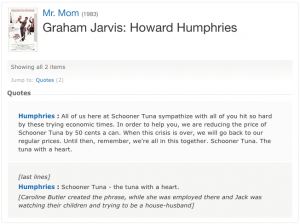With ever-increasing days under our belt as remote teachers, thousands of educators are likely taking stock this morning. If this is the new normal, how normal was yesterday?
Teachers
 It was obvious which teachers had been taking Blended Learning seriously, who had been ever-increasing the expansion of their classrooms and which educators had held tightly to the confines of their physical classrooms. Teachers who have experimented with Blended Learning have had many points of failure/learning, but it wasn’t in front of everybody, and it wasn’t yesterday. Teachers who are not fluent in Online or Blended Learning environments struggle to imagine what their students would do online.
It was obvious which teachers had been taking Blended Learning seriously, who had been ever-increasing the expansion of their classrooms and which educators had held tightly to the confines of their physical classrooms. Teachers who have experimented with Blended Learning have had many points of failure/learning, but it wasn’t in front of everybody, and it wasn’t yesterday. Teachers who are not fluent in Online or Blended Learning environments struggle to imagine what their students would do online.
Consider that households may have more than one student in a school system. And your course, directions, content may be undergoing some scrutiny. Plan with your team and use the district or school resources available to you. Now is not the time to be a rebel, especially if you are not practiced in Blended Learning – it is a huge leap to remote learning.
Students & Parents
But of course, the students already understand this. They had other teachers before this year, teachers who allowed them to learn new ways to learn. Students likely have already had opportunities to asynchronously alter their learning patterns to fit their lives. It is some of my teacher friends who are struggling with that, not the students.
I *know* some of the parents are struggling – because I heard about frustrations from many of my friends yesterday. What does that say about education when parents who have been out of the educational system for decades have a similar understanding of how the classroom should operate as some teaching today?
New Learners. Learners have new skills to learn. While that is exciting it is also exhausting to constantly be learning new skills, and course content, and work with a parent who may not be a professional educator.
Students may not have joined a video conference before. Consider an asynchronous video on how to join a video conference in advance of inviting them to one. Include important things you want them to do or not do during the video conference (like how to Mute and Unmute). Ask them to have a set of headphones or earbuds ready. Consider offering a video chat to your newest teacher’s assistants also, they want to help but likely have many questions. These should be two different events as parents’ concerns are not students’ concerns.
Learners may need to understand the workflow for assignments. Clarification on what needs to be printed out and what can remain digital. What is the expected procedure for pencil paper activities? Hint: make sure they count now or the next School From Home the students will assume they do NOT count.
Kindly also think through the workflow for parents as they are learners too. If you send information out only to a mobile device, what do you expect the parent to do with it? Sending “Click Here” for student work to parents is often confusing on mobile devices. Are you expecting parents to hand their device to the students or print it off? The way in which you send items signals their use-case/intention. There is nothing wrong with email, which is mobile and desktop/laptop accessible.
New Resources

Mr. Mom (1983) Quote
There are two things going on with the deluge of #edtech companies offering free use of their tools. One, most of these companies are made up of ex-teachers, caring educators, and people who really want to pitch in and help; and second, these companies know a certain percentage of users will purchase after this crisis. It is a fortunate situation for those who have wanted to try some new #edtech tools, like those experienced Blended Learning teachers. However, it could be confusing for less experienced teachers, their students who are unaccustomed to these types of tools and at home with less support than at school. And the parents of those students who are in the middle.
A new resource could be introduced as an extension/enrichment/remediation for students and as a teaching tool, anytime. However, avoid unguided use by students of new tools without prior instruction. Various list exists of numerous #edtech companies willing to provide you a free trial during this period.
Consider some Background Reading:
Social Presence Online, Teacher Presence in your Classroom
Interaction in Virtual Communities
Creating Online Content Mistakes
Course Structure Suggestions: Move Instruction Online, Content Chunking, Large Impact Moves, HTML Adjustments for your Content, Reduce Distraction
Converting Content Suggestions: Converting your Course, Put Worksheets Online
Ready to Teach Online Inforgraphic







2020-04-28 at 11:48 am
Distance learning is different for all of us. Our concerns have been whether our children will progress to the next grade, as they would have with regular schooling. Thanks for sharing 🙂
Megan | The ABC Mom recently posted…5 Ways to Survive Quarantine with a New Puppy